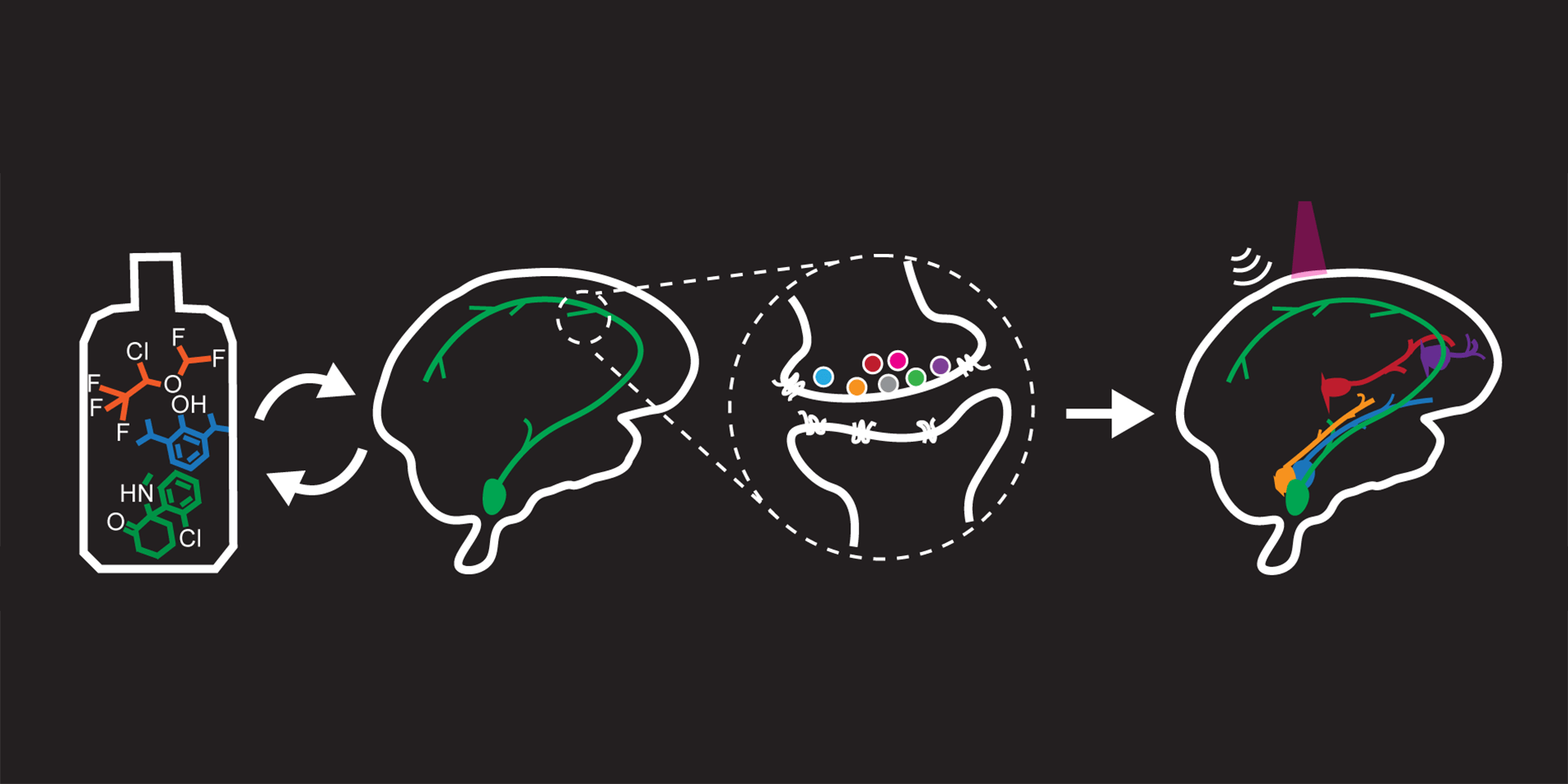
Li Lab
The ability to control arousal is essential to modern medicine, with broad applications in anesthesia, sleep medicine and psychiatry. However, arousal control is not binary, but rather involves the complex orchestration of multiple neuromodulatory circuits. The Li Lab therefore aims to better understand the neurobiology of these neuromodulatory circuits across broad spatiotemporal scales, integrating findings at the molecular, synaptic, circuit, physiological and behavioral levels. We also adapt technology to enable bidirectional modulation of arousal with increased circuit-specificity. The long-term goal is to control arousal more precisely via rational targeting of specific neural circuits.
Logic of neuromodulatory circuits in arousal
We examine how specific projections of neuromodulatory circuits and neuromodulatory circuits in combination affect arousal.
Neuromodulatory circuits are important in controlling arousal and are often co-opted in medicine to alter a patient’s arousal level, but how they work in concert is not well known. We use a rich repertoire of cutting-edge techniques in a small-animal model, such as single-cell RNA sequencing, tissue clearing for anatomical mapping, fiber photometry, silicone probe recording and machine learning to determine how different arousal circuits interact. In particular, we have a strong focus on the locus coeruleus, an important noradrenergic circuit that can couple its arousal function to other important brain processing and physiological functions.
Opioid systems in arousal modulation
We examine how different opioid systems modulate arousal and their potential translation in sleep disorders.
The opioid epidemic claimed more than 80,000 lives in 2022 and remains a heavy economic burden in society. We aim to understand how chronic opioid use and withdrawal can disrupt sleep via the locus coeruleus, an important noradrenergic output of the brain, as poor sleep is associated with continued opioid use and relapse. We also are interested in the nociceptin opioid receptor (NOPR) system, with minimal cross-reactivity to the other opioid receptors. As NOPR activation can lead to sedation, we characterize this sedation and seek to find out the brain circuits that may underlie this effect on arousal.
Tool development in arousal modulation
We collaborate with others to develop tools to modulate arousal bidirectionally.
We are interested in using focused ultrasound to develop a non-invasive, non-pharmacological way of modulating arousal.

Li Li, MD, PhD
Li Li, MD, PhD, is a pediatric anesthesiologist, a principal investigator at the Norcliffe Foundation Center for Integrative Brain Research (NFCIBR) at Seattle Children's Research Institute and a member of the University of Washington (UW) Center of Excellence in Neurobiology of Addiction, Pain, and Emotion (NAPE). He seeks to improve medical care involving anesthetics and sedatives by better understanding the brain circuits that regulate arousal, and by developing drugs and technology that can more precisely modulate those circuits.
Dr. Li received his MD and PhD in neurosciences with Professor Richard Tsien at Stanford University. He then completed his anesthesiology residency at the UW and his pediatric anesthesiology fellowship at Seattle Children's Hospital. He subsequently joined the UW clinical faculty while conducting postdoctoral research with Professor Michael Bruchas. Dr. Li is passionate about mentoring and training the next generation of physician-scientists.
-

Abigail Gao
Research Technician
-

Nicole Miranda
Postdoctoral Researcher
-

Anirudh Ramadurai
Undergraduate Trainee
-

Iris Xu
Undergraduate Trainee
Alumni
- Myesa Travis, 2023-2025, medical school
- Martin Chen, 2024-2025, graduate school
- Emma Lo, 2025 summer SPARQ program, undergraduate
- Abdul Hameed, 2024-2025, undergraduate
